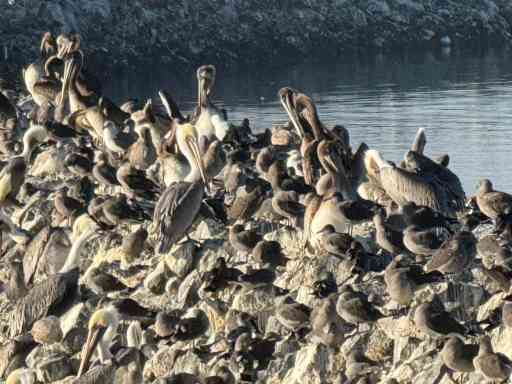Monday, 18th November 2024
llm-gemini 0.4.
New release of my llm-gemini plugin, adding support for asynchronous models (see LLM 0.18), plus the new gemini-exp-1114 model (currently at the top of the Chatbot Arena) and a -o json_object 1 option to force JSON output.
I also released llm-claude-3 0.9 which adds asynchronous support for the Claude family of models.
The main innovation here is just using more data. Specifically, Qwen2.5 Coder is a continuation of an earlier Qwen 2.5 model. The original Qwen 2.5 model was trained on 18 trillion tokens spread across a variety of languages and tasks (e.g, writing, programming, question answering). Qwen 2.5-Coder sees them train this model on an additional 5.5 trillion tokens of data. This means Qwen has been trained on a total of ~23T tokens of data – for perspective, Facebook’s LLaMa3 models were trained on about 15T tokens. I think this means Qwen is the largest publicly disclosed number of tokens dumped into a single language model (so far).
Qwen: Extending the Context Length to 1M Tokens (via) The new Qwen2.5-Turbo boasts a million token context window (up from 128,000 for Qwen 2.5) and faster performance:
Using sparse attention mechanisms, we successfully reduced the time to first token for processing a context of 1M tokens from 4.9 minutes to 68 seconds, achieving a 4.3x speedup.
The benchmarks they've published look impressive, including a 100% score on the 1M-token passkey retrieval task (not the first model to achieve this).
There's a catch: unlike previous models in the Qwen 2.5 series it looks like this one hasn't been released as open weights: it's available exclusively via their (inexpensive) paid API - for which it looks like you may need a +86 Chinese phone number.
Pixtral Large (via) New today from Mistral:
Today we announce Pixtral Large, a 124B open-weights multimodal model built on top of Mistral Large 2. Pixtral Large is the second model in our multimodal family and demonstrates frontier-level image understanding.
The weights are out on Hugging Face (over 200GB to download, and you'll need a hefty GPU rig to run them). The license is free for academic research but you'll need to pay for commercial usage.
The new Pixtral Large model is available through their API, as models called pixtral-large-2411 and pixtral-large-latest.
Here's how to run it using LLM and the llm-mistral plugin:
llm install -U llm-mistral
llm keys set mistral
# paste in API key
llm mistral refresh
llm -m mistral/pixtral-large-latest describe -a https://static.simonwillison.net/static/2024/pelicans.jpg
The image shows a large group of birds, specifically pelicans, congregated together on a rocky area near a body of water. These pelicans are densely packed together, some looking directly at the camera while others are engaging in various activities such as preening or resting. Pelicans are known for their large bills with a distinctive pouch, which they use for catching fish. The rocky terrain and the proximity to water suggest this could be a coastal area or an island where pelicans commonly gather in large numbers. The scene reflects a common natural behavior of these birds, often seen in their nesting or feeding grounds.

Update: I released llm-mistral 0.8 which adds async model support for the full Mistral line, plus a new llm -m mistral-large shortcut alias for the Mistral Large model.